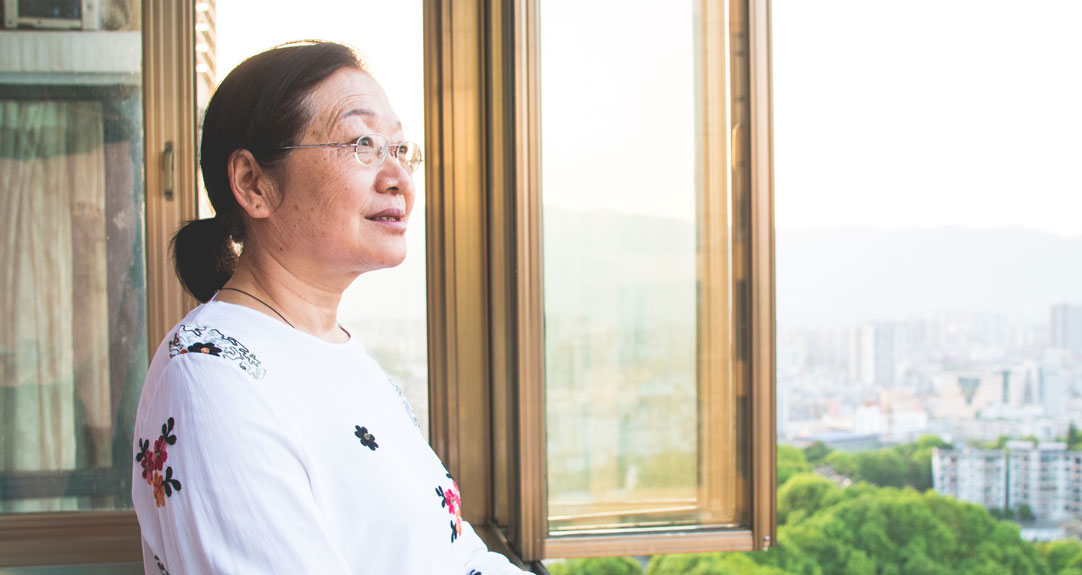An Introduction of Targeted Drugs Insurance for Breast Cancer in China
New insurance product covers more advanced medical resources—namely, targeted drugs
July 2020Photo: iStock.com/xijian
2020 Young Actuaries in Asia Essay Winners
This article is one of the three winners of the Society of Actuaries 2020 Young Actuaries in Asia Essays on Societal Impact contest. Participants were asked to provide specific examples of how they are making a societal impact using their actuarial skills in either a personal or professional context.
Read the other winning essays:
- Actuarial Volunteers in a Kids Charity Program by Fan Xiao, ASA; Jiangang He, FSA; and Jun (Forest) Wang, FSA
- Cambodian Insured Lives Mortality with Data Science by Nicholas Yeo Chee Lek, FSA
This article describes a targeted drugs insurance product in the Chinese market, including its background, features, pricing and sales. We are deeply involved in the development of this product and are glad to see that this product can help more people live better lives.
The China Medical Insurance Market
The national insurance plan in China covers more than 1.35 billion people. The plan has a National Drug Reimbursement List (NDRL) and reimburses a certain percentage of treatment and drug costs in the list. Due to the universal coverage of the national insurance plan, most commercial medical insurance plans have features that are closely integrated with the national insurance plan. In the last three years, commercial mid-end medical insurance plans have increased rapidly in the Chinese market. Its new business premium was approximately 30 billion yuan in 2019. It usually covers 100 percent of treatment and drug costs in the public hospital during hospitalization and specialized outpatient clinics (both in and out of NDRL) with a 10,000 yuan deductible. However, if insureds buy drugs outside of the public hospital, the costs will not be reimbursed.
Product Introduction
With the development of commercial mid-end medical insurance products, more and more services and riders are developed, such as online medical video consultations. In the last two years, the China Food and Drug Administration (CFDA) has approved several of the latest targeted drugs, some of which are not included in the NDRL and are sold outside of the hospital in most situations. Meanwhile, more and more Chinese are discovering through some social events that targeted drugs are useful in the treatment of cancer—especially in some terminal stages.
Breast cancer is one of the most common cancers threatening Chinese women’s health. The peak of incidence rate is at the 50–60 age group, with a probability of more than 1/1,000. China is one of the fastest-growing countries in the breast cancer incidence rate, with a deterioration rate of 2 percent per year. For insureds, the rate is much higher because of anti-selection, regional differences and so on. The burden on cancer patients is increasing.
We developed a product named “Guardian of Beauty,” which provides drugs and services when the insured is diagnosed with breast cancer. The product’s features are:
- One-year term product
- Outpatient expert arrangement within seven working days
- Secondary consultation and treatment of specialized experts
- If the insured is diagnosed with breast cancer that is eligible for hospitalization, inpatient beds will be arranged within 15 working days.
- Genetic testing reimbursement with 100 percent coverage and a limitation of 10,000 yuan
- Three years’ costs reimbursement for five targeted drugs approved by CFDA, with 100 percent coverage and a limitation of 2 million yuan, no matter if the insured uses medications inside or outside of the hospital. If the insured needs drugs outside of the hospital, the Third-Party Administrator (TPA) can provide free home delivery service.
- Psychological counseling
This product’s key feature is to provide targeted drugs for the insured diagnosed with breast cancer. Outside of the hospital, it provides drugs to the insured directly and at no cost to the insured. This kind of insurance claim—offering drugs rather than cash reimbursement to the insured—is similar to the pharmacy-benefits management (PBM) in the United States and is a relatively new model for medical insurance in China. Meanwhile, the TPA can help the insurance company double-check the prescription and control the dose.
Pricing
By combining two types of data, we finished the first step of pricing. Though the targeted drugs are very expensive for a patient, the premium is relatively cheap for an insured.
- Breast cancer incidence rate. Based on critical illness and mid-end medical insurance policies’ experience, we have the incidence rate of the insureds. Also, we considered future deterioration trends, regions and wealth levels of target customers.
- Targeted drugs data. There aren’t enough data from past claims. Based on data from clinical trials, we have the monthly cost, treatment cycle and indications.
Risk and Sales
Anti-selection is one of the concerns, for the single-disease insurance product usually has high anti-selection due to its low price and high leverage. In order to control anti-selection, it is necessary that the new product is tied with a critical illness product, which is whole life and much more expensive. The bundle sale also helps increase sales of critical illness products.
This product helps enrich the product line, and sales are better than expected. More important, it can provide targeted drugs outside of the hospital, which expands the scope of mid-end medical insurance.
Conclusion
Drug costs account for a large portion of cancer treatment expenses. A targeted drug insurance product helps the insured have access to advanced medical resources. Meanwhile, the targeted drug product is a new model for insurance claims in China.
This product is the first single‑disease targeted drug insurance product in the Chinese market. It provides customers with the whole process from the prevention of seeking medical treatment to the medication of breast cancer, and it relieves the financial and medical resource pressure that patients feel.
Copyright © 2020 by the Society of Actuaries, Chicago, Illinois.

